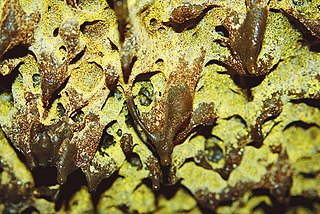
Lava Beds National Monument is located in northeastern California, in Siskiyou and Modoc counties. The monument lies on the northeastern flank of Medicine Lake Volcano and has the largest total area covered by a volcano in the Cascade Range.

A pluvial lake is a body of water that accumulated in a basin because of a greater moisture availability resulting from changes in temperature and/or precipitation. These intervals of greater moisture availability are not always contemporaneous with glacial periods. Pluvial lakes are typically closed lakes that occupied endorheic basins. Pluvial lakes that have since evaporated and dried out may also be referred to as paleolakes.
Mud Lake may refer to several places:
Paul Franklin Crouch was an American television evangelist. Crouch and his wife, Jan, founded the Trinity Broadcasting Network (TBN) in 1973.
Mary Fleener (b.1951) is an American alternative comics artist, writer and musician from Los Angeles. Fleener's drawing style, which she calls cubismo, derives from the cubist aesthetic and other artistic traditions. Her first publication was a work about Zora Neale Hurston, called Hoodoo (1988), followed by the semi-autobiographical comics series Slutburger, and the anthology Life of the Party (1996). She is a member of the rock band called The Wigbillies.
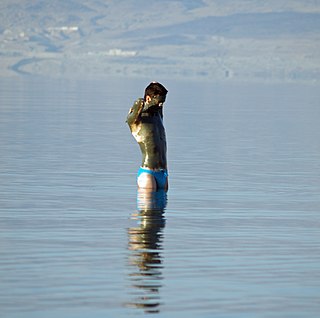
A mud bath is a bath of mud, commonly from areas where hot spring water can combine with volcanic ash. Mud baths have existed for thousands of years, and can be found now in high-end spas in many countries of the world.

Pfeiffer Big Sur State Park is a state park in Monterey County, California, near the area of Big Sur on the state's Central Coast. It covers approximately 1,006 acres (4.07 km2) of land. The park is centered on the Big Sur River. It has been nicknamed a "mini Yosemite."

The New Zealand mud snail is a species of very small freshwater snail with a gill and an operculum. This aquatic gastropod mollusk is in the family Tateidae. It is an invasive species in many countries, where populations of the snail can reach phenomenal densities.

The Smoke Creek Desert is an arid region of northwestern Nevada, USA that lies about 60 miles (97 km) to the north of Pyramid Lake, west of the Fox Range and east of the Smoke Creek Mountains. The southern end of the desert lies on the Pyramid Lake Indian Reservation, and a rail line lies at the eastern edge. The Smoke Creek Desert is southwest of the Black Rock Desert's South Playa and is between the Granite Range and the Fox Range.
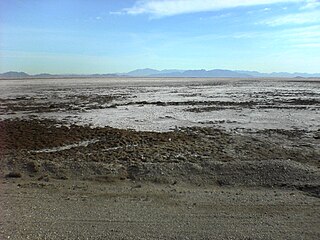
Bristol Lake is a dry lake in the Mojave Desert of San Bernardino County, California, 42 km (26 mi) northeast of Twentynine Palms.

Benton Township is one of eleven townships in Monroe County, Indiana, United States. As of the 2010 census, its population was 3,358 and it contained 1,716 housing units.
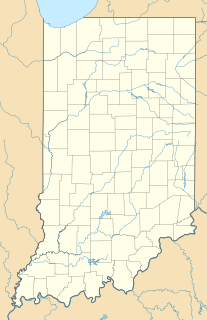
Fleener is an unincorporated community in Benton Township, Monroe County, in the U.S. state of Indiana.

Hullville is a former settlement in Lake County, California. Hullville was located 3 miles (4.8 km) east-southeast of Bear Mountain, It was inundated by Lake Pillsbury.
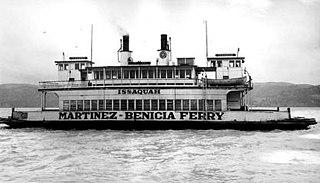
Issaquah was a steam ferry built in 1914 that operated on Lake Washington and in San Francisco Bay.

Cahuilla is an unincorporated community in Riverside County, California. It lies at an elevation of 3642 feet. Cahuilla is located 14 miles (22.5 km) south of Idyllwild.

Jacoby Fleener is an American football tight end who is currently a free agent. After playing at Joliet Catholic Academy during high school, Fleener played college football at Stanford University. He was drafted by the Indianapolis Colts in the second round of the 2012 NFL Draft. He has also played for the New Orleans Saints.
Mud Spring, formerly Aquaje Lodoso, is a spring and historic site in the western Antelope Valley, within northern Los Angeles County, southern California.
The Fish River chain of lakes is a series of five lakes in the North Maine Woods region of northern Maine, in a tributary stream to the Fish River. The lakes are an important northern Maine recreation area providing habitat for wildlife including rainbow smelt, brook trout, lake trout, and land-locked Atlantic salmon.

In January 2017, scientists announced the possible discovery of mud cracks in Gale Crater on Mars. The Curiosity Rover imaged what may be the first mud cracks ever found on Mars. They may have been formed from drying mud. The site, called “Old Soaker,” was within an exposure of Murray formation mudstone on lower Mount Sharp. It is hypothesized that these cracks formed more than 3 billion years ago and then were buried by more sediment. All this material eventually turned into rock. Later wind erosion removed the layers that covered the cracked layer. The cracks were filled with material which was resistant to later erosion. This erosion resistant material formed raised ridges, as some of the surrounding layer was removed. This is the first sighting of mud cracks. Previously, Curiosity has examined cracks and ridges of different shapes that were made by groundwater carrying minerals, such as calcium sulfate. Cracks for this process were caused by the pressure of overlying sediments fracturing rock. Gale Crater held ancient lakes that varied in depth and area over time, and sometimes disappeared. Mud cracks show that there were dry times when lakes disappeared. Besides this evidence of mud, Curiosity has found evidence of ancient lakes in older layers and also in younger mudstone. Nathan Stein, a graduate student at the California Institute of Technology led the investigation.
















